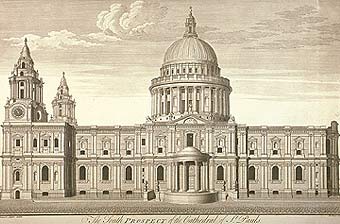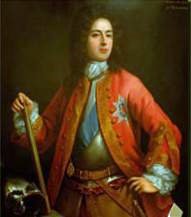 |
| The arrival in England of William of Orange as depicted by Sir James Thornhill |
 |
| Sir Christopher Wren rebuilds St. Pauls after the old edifice was destroyed in the conflagration of 1666 |
 |
| John Churchill 1st Duke of Marlborough 1650-1722 |
 |
| Sir Robert Walpole in conversation with Speaker Onslow in a painting by Sir James Thornhill (1730) |
 |
| The Thames on Lord Mayor's Day (1752) by Canaletto (abstract) |
 |
| William Pitt the Younger |
In England the cabinet system is restored to government after the disaster of George’s personal rule. In 1783 William Pitt the younger, at 24 years of age, becomes Prime Minister. In 1776 Adam Smith’s The Wealth of Nations is published. It is the age of Burke, Goldsmith, Gibbon, Sheridan and Gainsborough, and of the literary giant, Dr. Samuel Johnson. And in 1782 James Watt develops the steam engine, which is to lead to the creation of the railways and the Industrial Revolution.
 |
| Samuel Johnson 'the Great Cham' by Sir Joshua Reynolds (c. 1772) In April 1775 he published his Dictionary of the English Language |


No comments:
Post a Comment